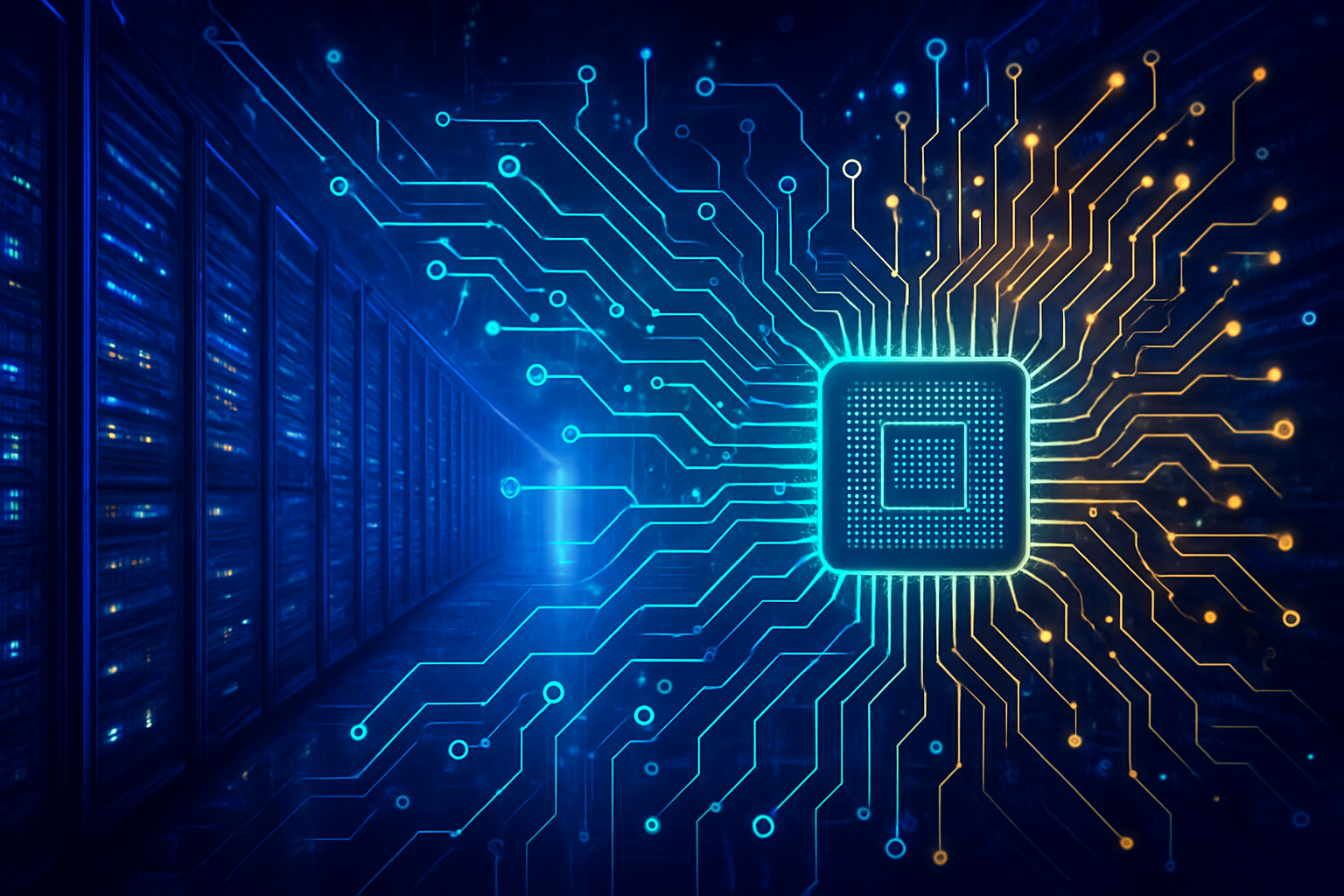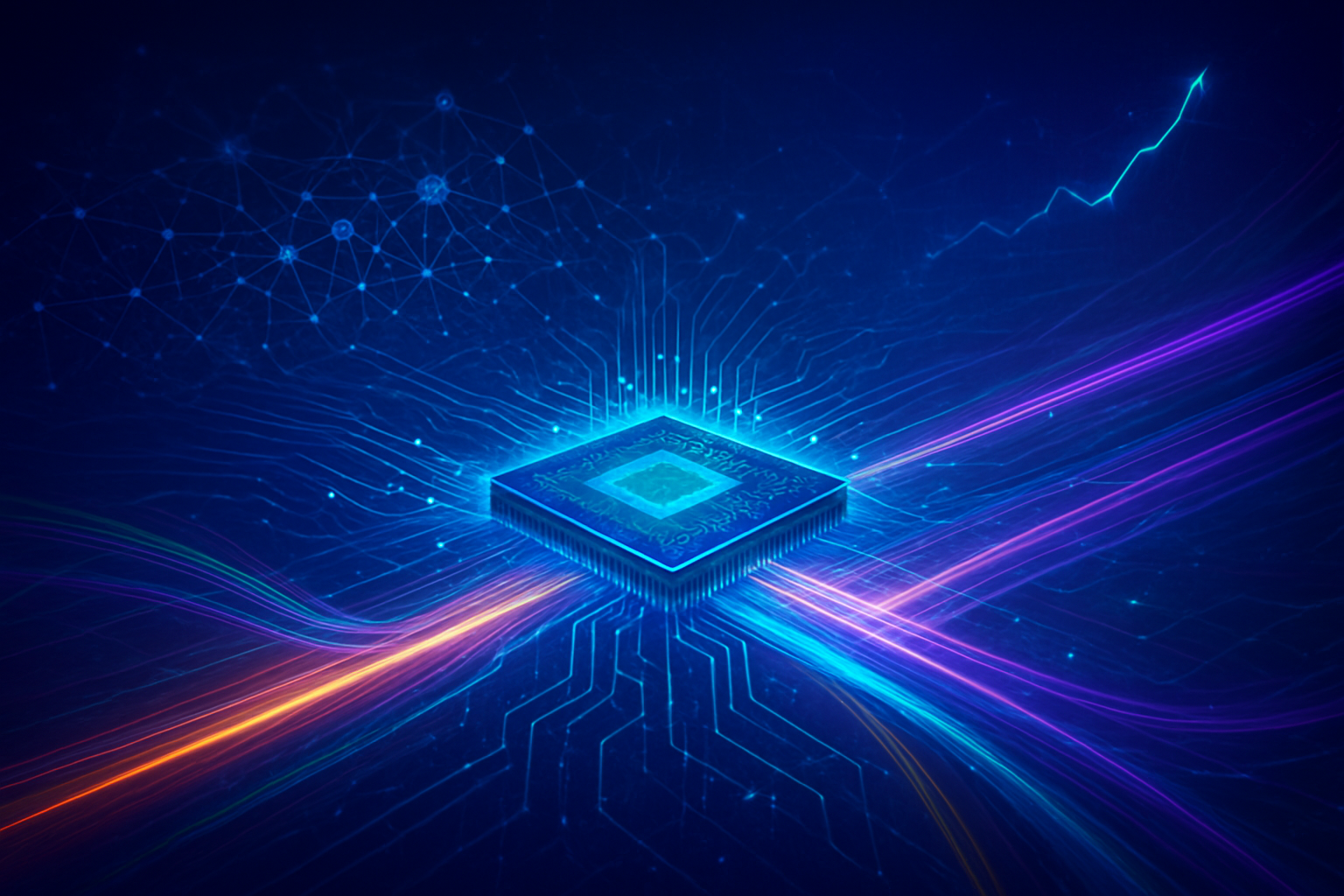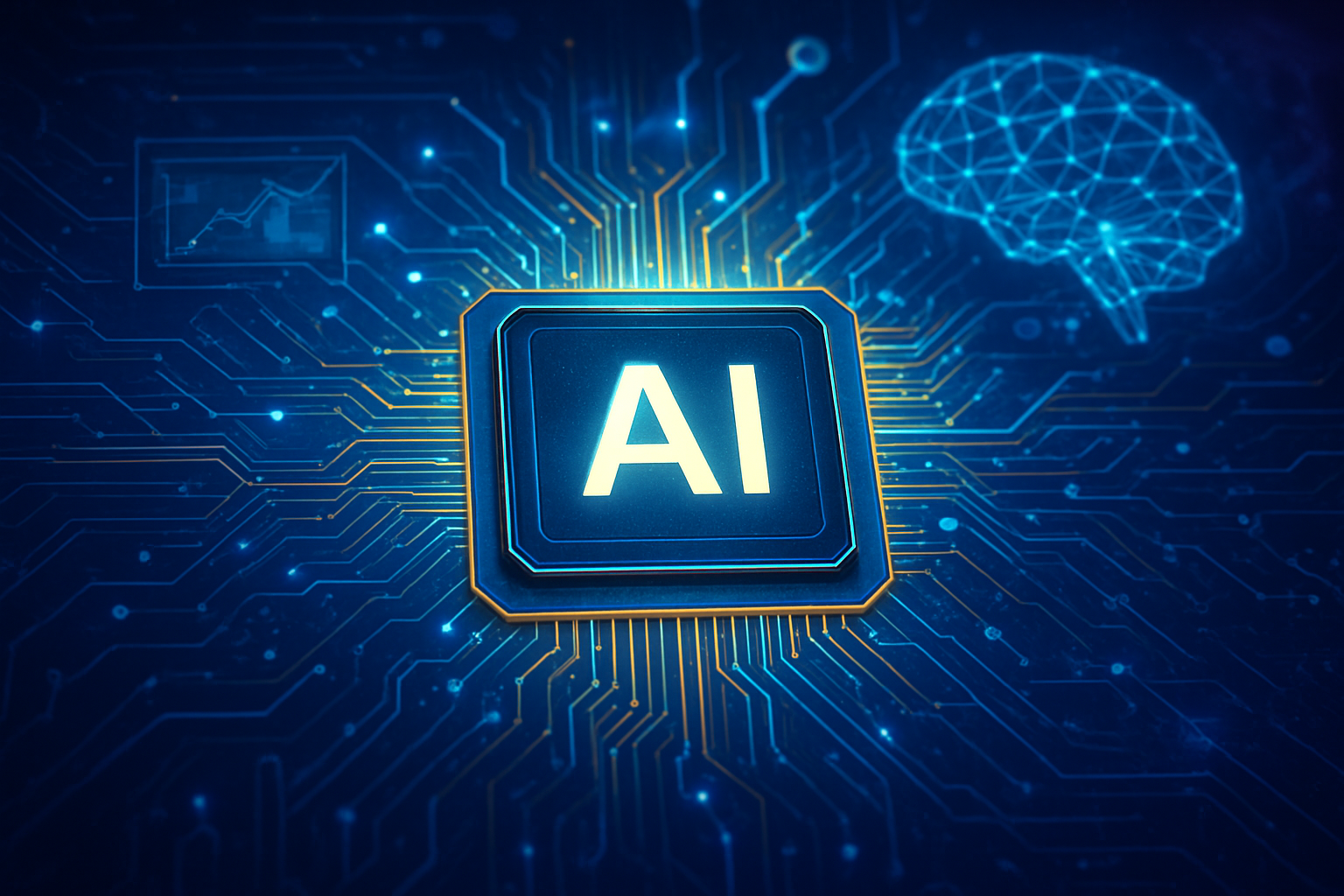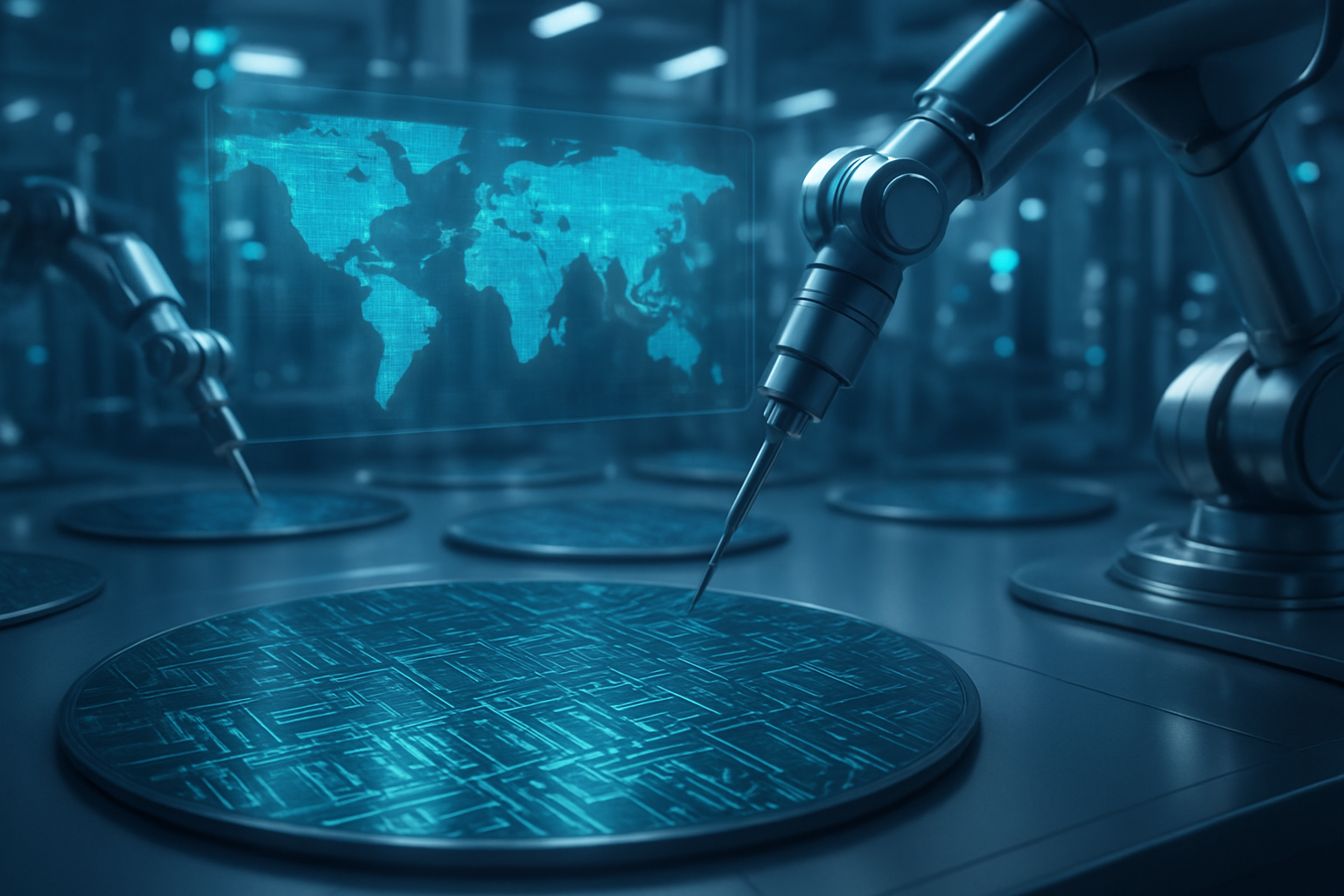The once seamlessly interconnected global semiconductor supply chain, the lifeblood of modern technology, is increasingly fractured by escalating geopolitical tensions and nationalistic agendas. What was once primarily an economic and logistical challenge has transformed into a strategic battleground, with nations vying for technological supremacy and supply chain resilience. This profound shift is not merely impacting the flow of chips but is fundamentally altering manufacturing strategies, driving up costs, and accelerating a global race for technological self-sufficiency, with immediate and far-reaching consequences for every facet of the tech industry, from AI development to consumer electronics.
The immediate significance of this transformation is undeniable. Semiconductors, once seen as mere components, are now recognized as critical national assets, essential for economic stability, national security, and leadership in emerging technologies like artificial intelligence, 5G, and advanced computing. This elevated status means that trade policies, international relations, and even military posturing directly influence where and how these vital components are designed, manufactured, and distributed, ushering in an era of techno-nationalism that prioritizes domestic capabilities over global efficiency.
The Bifurcation of Silicon: Trade Policies and Export Controls Drive a New Era
The intricate web of the global semiconductor supply chain, once optimized for maximum efficiency and cost-effectiveness, is now being unwound and rewoven under the immense pressure of geopolitical forces. This new paradigm is characterized by specific trade policies, stringent export controls, and a deliberate push for regionalized ecosystems, fundamentally altering the technical landscape of chip production and innovation.
A prime example is the aggressive stance taken by the United States against China's advanced semiconductor ambitions. The US has implemented sweeping export controls, notably restricting access to advanced chip manufacturing equipment, such as extreme ultraviolet (EUV) lithography machines from Dutch firm ASML, and high-performance AI chips (e.g., Nvidia's (NASDAQ: NVDA) A100 and H100). These measures are designed to hobble China's ability to develop cutting-edge semiconductors vital for advanced AI, supercomputing, and military applications. This represents a significant departure from previous approaches, which largely favored open trade and technological collaboration. Historically, the flow of semiconductor technology was less restricted, driven by market forces and global specialization. The current policies are a direct intervention aimed at containing specific technological advancements, creating a "chokepoint" strategy that leverages the West's lead in critical manufacturing tools and design software.
In response, China has intensified its "Made in China 2025" initiative, pouring billions into domestic semiconductor R&D and manufacturing to achieve self-sufficiency. This includes massive subsidies for local foundries and design houses, aiming to replicate the entire semiconductor ecosystem internally. While challenging, China has also retaliated with its own export restrictions on critical raw materials like gallium and germanium, essential for certain types of chips. The technical implications are profound: companies are now forced to design chips with different specifications or use alternative materials to comply with regional restrictions, potentially leading to fragmented technological standards and less efficient production lines. The initial reactions from the AI research community and industry experts have been mixed, with concerns about stifled innovation due to reduced global collaboration, but also recognition of the strategic necessity for national security. Many anticipate a slower pace of cutting-edge AI hardware development in regions cut off from advanced tools, while others foresee a surge in investment in alternative technologies and materials science within those regions.
Competitive Shake-Up: Who Wins and Loses in the Geopolitical Chip Race
The geopolitical reshaping of the semiconductor supply chain is creating a profound competitive shake-up across the tech industry, delineating clear winners and losers among AI companies, tech giants, and nascent startups. The strategic implications are immense, forcing a re-evaluation of market positioning and long-term growth strategies.
Companies with diversified manufacturing footprints or those aligned with national reshoring initiatives stand to benefit significantly. Major foundries like Taiwan Semiconductor Manufacturing Company (NYSE: TSM) and Intel Corporation (NASDAQ: INTC) are at the forefront, receiving substantial government subsidies from the US CHIPS and Science Act and the European Chips Act to build new fabrication plants outside of geopolitically sensitive regions. This influx of capital and guaranteed demand provides a massive competitive advantage, bolstering their manufacturing capabilities and market share in critical markets. Similarly, companies specializing in less restricted, mature node technologies might find new opportunities as nations prioritize foundational chip production. However, companies heavily reliant on a single region for their supply, particularly those impacted by export controls, face severe disruptions, increased costs, and potential loss of market access.
For AI labs and tech giants, the competitive implications are particularly acute. Companies like NVIDIA (NASDAQ: NVDA) and Advanced Micro Devices (NASDAQ: AMD) are navigating complex regulatory landscapes, having to design region-specific versions of their high-performance AI accelerators to comply with export restrictions. This not only adds to R&D costs but also fragments their product offerings and potentially slows down the global deployment of their most advanced AI hardware. Startups, often with limited resources, are struggling to secure consistent chip supplies, facing longer lead times and higher prices for components, which can stifle innovation and delay market entry. The push for domestic production also creates opportunities for local AI hardware startups in countries investing heavily in their own semiconductor ecosystems, but at the cost of potential isolation from global best practices and economies of scale. Overall, the market is shifting from a purely meritocratic competition to one heavily influenced by geopolitical alignment and national industrial policy, leading to potential disruptions of existing products and services if supply chains cannot adapt quickly enough.
A Fragmented Future: Wider Significance and Lingering Concerns
The geopolitical reordering of the semiconductor supply chain represents a monumental shift within the broader AI landscape and global technology trends. This isn't merely an economic adjustment; it's a fundamental redefinition of how technological power is accumulated and exercised, with far-reaching impacts and significant concerns.
This development fits squarely into the broader trend of techno-nationalism, where nations prioritize domestic technological capabilities and self-reliance over global efficiency and collaboration. For AI, which relies heavily on advanced silicon for training and inference, this means a potential fragmentation of development. Instead of a single, globally optimized path for AI hardware innovation, we may see distinct regional ecosystems developing, each with its own supply chain, design methodologies, and potentially, varying performance capabilities due to restricted access to the most advanced tools or materials. This could lead to a less efficient, more costly, and potentially slower global pace of AI advancement. The impacts extend beyond just hardware; software development, AI model training, and even ethical AI considerations could become more localized, potentially hindering universal standards and collaborative problem-solving.
Potential concerns are numerous. The most immediate is the risk of stifled innovation, as export controls and supply chain bifurcations limit the free flow of ideas, talent, and critical components. This could slow down breakthroughs in areas like quantum computing, advanced robotics, and next-generation AI architectures that require bleeding-edge chip technology. There's also the concern of increased costs for consumers and businesses, as redundant supply chains and less efficient regional production drive up prices. Furthermore, the politicization of technology could lead to a "digital divide" between nations with robust domestic chip industries and those without, exacerbating global inequalities. Comparisons to previous AI milestones, such as the initial breakthroughs in deep learning, highlight a stark contrast: those advancements benefited from a relatively open global scientific community and supply chain. Today's environment presents significant headwinds to that kind of open, collaborative progress, raising questions about the future trajectory of AI.
The Horizon of Silicon: Expected Developments and Looming Challenges
Looking ahead, the geopolitical currents shaping the semiconductor supply chain are expected to intensify, leading to a landscape of both rapid innovation in specific regions and persistent challenges globally. The near-term and long-term developments will profoundly influence the trajectory of AI and technology at large.
In the near term, we can expect to see continued massive investments in domestic chip manufacturing capabilities, particularly in the United States, Europe, and India, driven by acts like the US CHIPS Act and the European Chips Act. This will lead to the construction of new fabrication plants and research facilities, aiming to diversify production away from the current concentration in East Asia. We will also likely see a proliferation of "friend-shoring" strategies, where countries align their supply chains with geopolitical allies to ensure greater resilience. For AI, this means a potential boom in localized hardware development, with tailored solutions for specific regional markets. Long-term, experts predict a more regionalized, rather than fully globalized, semiconductor ecosystem. This could involve distinct technology stacks developing in different geopolitical blocs, potentially leading to divergence in AI capabilities and applications.
Potential applications and use cases on the horizon include more robust and secure AI systems for critical infrastructure, defense, and government services, as nations gain greater control over their underlying hardware. We might also see innovations in chip design that prioritize modularity and adaptability, allowing for easier regional customization and compliance with varying regulations. However, significant challenges need to be addressed. Securing the immense talent pool required for these new fabs and R&D centers is a major hurdle. Furthermore, the economic viability of operating less efficient, geographically dispersed supply chains without the full benefits of global economies of scale remains a concern. Experts predict that while these efforts will enhance supply chain resilience, they will inevitably lead to higher costs for advanced chips, which will be passed on to consumers and potentially slow down the adoption of cutting-edge AI technologies in some sectors. The ongoing technological arms race between major powers will also necessitate continuous R&D investment to maintain a competitive edge.
Navigating the New Normal: A Summary of Strategic Shifts
The geopolitical recalibration of the global semiconductor supply chain marks a pivotal moment in the history of technology, fundamentally altering the landscape for AI development and deployment. The era of a purely economically driven, globally optimized chip production is giving way to a new normal characterized by strategic national interests, export controls, and a fervent push for regional self-sufficiency.
The key takeaways are clear: semiconductors are now strategic assets, not just commercial goods. This elevation has led to unprecedented government intervention, including massive subsidies for domestic manufacturing and stringent export restrictions, particularly targeting advanced AI chips and manufacturing equipment. This has created a bifurcated technological environment, where companies must navigate complex regulatory frameworks and adapt their supply chains to align with geopolitical realities. While this shift promises greater resilience and national security, it also carries the significant risks of increased costs, stifled innovation due to reduced global collaboration, and potential fragmentation of technological standards. The competitive landscape is being redrawn, with companies capable of diversifying their manufacturing footprints or aligning with national initiatives gaining significant advantages.
This development's significance in AI history cannot be overstated. It challenges the traditional model of open scientific exchange and global market access that fueled many past breakthroughs. The long-term impact will likely be a more regionalized and perhaps slower, but more secure, trajectory for AI hardware development. What to watch for in the coming weeks and months includes further announcements of new fab constructions, updates on trade policies and export control enforcement, and how major tech companies like Intel (NASDAQ: INTC), NVIDIA (NASDAQ: NVDA), and TSMC (NYSE: TSM) continue to adapt their global strategies. The ongoing dance between national security imperatives and the economic realities of globalized production will define the future of silicon and, by extension, the future of artificial intelligence.
This content is intended for informational purposes only and represents analysis of current AI developments.
TokenRing AI delivers enterprise-grade solutions for multi-agent AI workflow orchestration, AI-powered development tools, and seamless remote collaboration platforms.
For more information, visit https://www.tokenring.ai/.









